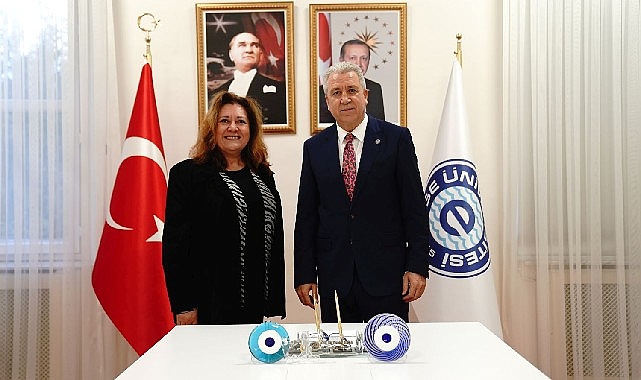
Aegean scientists continue to contribute to the scientific world with their projects and the outputs of these projects. Ege University, which hosts expert academics from various disciplines, produces concrete projects for diagnosis and treatment, especially in the field of health, as a result of multidisciplinary studies. Within the scope of these studies, Ege University Engineering Faculty Mechanical Engineering Department Dr. The “Development of a Contactless Remotely Controlled Bronchoscopic Electromagnetic Navigation System” project led by Faculty Member Aysun Baltacı was found eligible to be supported within the scope of “TÜBİTAK 1001 – Scientific and Technological Research Projects Support Program”. With the project, it will be possible to carry out the contactless method of bronchoscopy, which is applied in the diagnosis of lung cancer.
Congratulating the project team, Ege University Rector Prof. Dr. Necdet Budak said, “The projects carried out by our academicians continue to carry our university to the top at TÜBİTAK. From the Department of Mechanical Engineering, Dr. The project, developed by Faculty Member Aysun Baltacı, will facilitate the diagnosis of lung cancer. I sincerely congratulate our teacher and his team.”
Saying that lung cancer is the deadliest type of cancer, project coordinator Dr. Lecturer Aysun Baltacı said, “Lung cancer is the second most common type of cancer in the world and the most deadly one. Early diagnosis is the most important step in cancer treatment. Therefore, it is very important to increase the availability of diagnostic methods and equipment. The main method for lung cancer is computed tomography (CT) imaging followed by bronchoscopy. While the bronchoscope method generally helps in the diagnosis of central lung cancer, when used together with technologies such as flexible, electromagnetic navigational and virtual bronchoscope, the probability of its successful application in the diagnosis of peripheral lung cancer may increase. In these technologies; Although the bronchoscope image is not real-time, the bronchoscope is mechanically guided.
“Non-contact system guided outside the body”
Explaining the system to be developed with the project, Dr. Faculty Member Baltacı said, “In our project; It is aimed to develop an electromagnetic catheter system that can be continuously imaged inside the body with magnetic particle imaging method and manipulated outside the body without contact with the controlled magnetic field. Imaging and manipulation operations will be performed in real time, unlike other methods. The magnetic catheter to be developed in this system will be able to move to the reference position with closed loop control. Since the imaging shows magnetic particles, the bronchial structure will be made visible with the magnetic particle imaging system by giving air mixed with nanopowders to the bronchial structure phantom. Later, during the operation, both the iron oxide-coated catheter and the bronchial structure itself will be displayed in the bronchial structure with the multi-colored particle imaging method. In order to reach the reference position, the tip of the catheter will be guided by an electromagnetic actuator (EMA), and the forward driving process will be performed with the Catheter Driving system. In this way, it will be possible for trained physicians to perform bronchoscopy without being at the patient’s bedside. In addition, with the developed compatible control algorithm, the movement of the magnetic catheter in the bronchial region will be made safe and damage will be prevented during any contact with the bronchial structures. This mechatronic system is an integrated structure consisting of 6 sub-modules: Bronchoscopic Catheter, EMA Directing System, EMA MPG System, EMA Shifter System, EMA User Interface. In this study, a special magnetic topology that will cover the thoracic region and suitable for human thoracic region anatomy will be designed and developed. The developed system will be verified by testing on the bronchial structure phantom to be created from CT images.
Dr. In the project team led by Faculty Member Aysun Baltacı; Prof. from Ege University. Dr. Mutlu Boztepe, Prof. Dr. Tuncay Goksel, Assoc. Dr. Aylin Sendemir, Dr. Instructor Member Barış Oğuz Gürses, Exp. Dr. Haydar Soydaner Karakus, Dr. Ece Bayır, Assoc. Dr. Levent Cetin takes place.
Source: (BYZHA) – Beyaz News Agency

